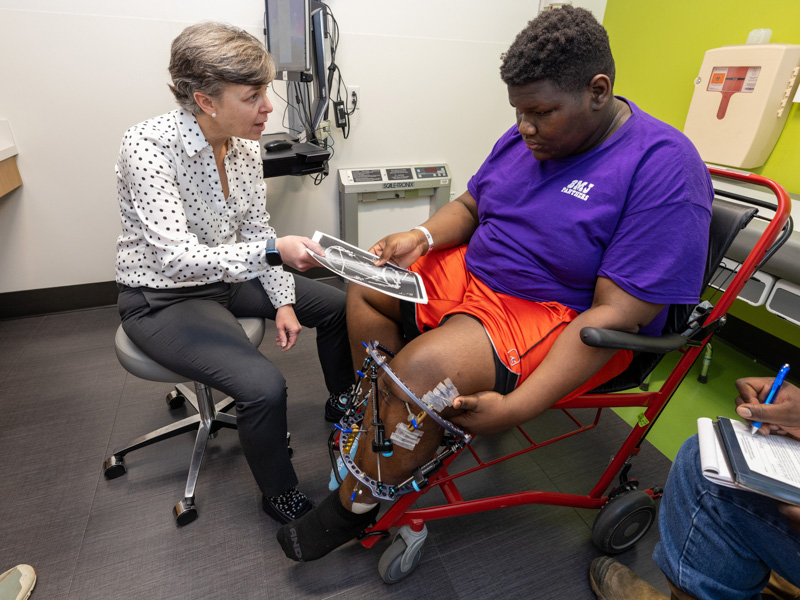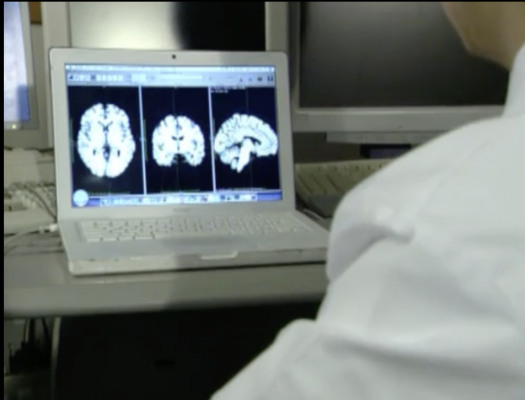An X-ray of an obese person may show excess body fat obscuring clear imaging. The radiographic technique requires adjustment for accurate results.
Understanding the challenges of X-ray imaging for obese individuals is crucial in modern medical diagnostics. The density and volume of adipose tissue in obese patients can significantly impact the clarity and interpretation of X-ray images, necessitating specialized strategies and equipment to achieve reliable visualization of structures.
Radiologists must often increase the exposure time or adjust the radiation dose to penetrate the extra mass, all while minimizing the radiation exposure for patient safety. This also requires careful positioning to optimize image quality and diagnostic efficacy. Successful imaging is essential for accurate diagnosis and treatment planning, making the knowledge of the correct X-ray procedures for obese patients a valuable asset in healthcare settings. These adjustments ensure that healthcare professionals can provide the same level of diagnostic care to obese patients as to those with average body mass.
The Challenge Of Imaging In Obese Patients
Imaging obese patients presents unique difficulties. Traditional medical imaging methods face challenges adjusting to larger body sizes. These issues can affect the quality of diagnostic images, making accurate diagnoses challenging. Medical professionals need to understand the technical limitations and adapt techniques for clear images.
Technical Limitations Of X-rays For Larger Bodies
- Increased tissue density makes it hard for X-rays to pass through the body.
- Higher radiation doses are often required, which can raise health concerns.
- Image distortion can occur, making it tricky to spot abnormalities.
Adapting Radiological Techniques For Enhanced Clarity
- Use advanced equipment designed to handle higher weight capacities.
- Apply digital radiography to improve image quality and reduce radiation exposure.
- Employ post-processing image enhancement tools to clarify details.
Health Risks Evident In X-rays
X-rays reveal more than just broken bones; they offer a window into a person’s overall health. Especially in obese individuals, an X-ray can expose hidden health risks. A peek through this high-energy radiation can highlight critical issues often associated with excessive weight.
Identifying Signs Of Heart Disease
Excess weight often contributes to heart disease, and X-rays can show the tale-tell signs. An enlarged heart or fluid around this vital organ may appear on chest X-rays. Both suggest potential heart complications. Spotting these signs early is crucial for preventing severe medical conditions.
Detecting Joint And Bone Issues
Excessive body weight increases stress on joints and bones, potentially leading to early wear and tear. X-rays of overweight individuals oftentimes show joint space narrowing and bone deformities. These images help doctors to diagnose and manage conditions like osteoarthritis.
Observing Lung And Breathing Complications
For those carrying extra pounds, breathing can become a laborious task. X-rays can highlight reduced lung volumes or a flattened diaphragm, both indicators of compromised breathing. Recognizing these features allows health professionals to support better respiratory health for obese patients.
Comparative Analysis With Standard Weight Individuals
X-ray imaging remains a primary diagnostic tool across body types.
Yet, noticeable differences emerge when comparing obese and standard weight individuals.
Understanding these differences aids in accurate diagnoses.
Key Differences In X-ray Results
The body mass presents unique challenges in obtaining clear X-ray images.
- Density: Extra tissue absorbs more X-rays, affecting image quality.
- Penetration: A higher X-ray dose is often required for clear images.
- Positioning: Standard positioning techniques might be modified.
Interpreting Variances In Diagnostic Images
Differentiating between normal anatomical variations and pathologies is critical.
| Aspect | Obese Individuals | Standard Weight Individuals |
|---|---|---|
| Soft Tissues | May appear more prominent | Less soft tissue, clearer visibility |
| Bone Structures | Potential for under-penetration | Typically well-defined |
| Pathology Identification | May be more challenging | Easier to recognize and define |

Credit: www.oarsiopenjournal.com
Impact Of Obesity On Diagnostic Accuracy
Obesity poses unique challenges for medical diagnostics, specifically when it comes to radiology. X-rays of obese individuals can often be less clear, making diagnosis more complex than in patients with lower body mass indexes (BMIs).
The Complication Of False Negatives
Obesity significantly alters the diagnostic landscape. The excessive tissue mass dampens the X-ray’s ability to penetrate, resulting in less defined imagery. This diminished clarity increases the risk of false negatives, where potential issues may go undetected due to the lack of image sharpness. Identifying conditions such as fractures, infections, or tumors becomes more challenging, sometimes leading to delayed or incorrect treatment.
Navigating Through Decreased Image Quality
Healthcare professionals use advanced imaging techniques and patient positioning to counteract the decreased image quality found in X-rays of obese individuals. These strategies include:
- Increase in radiation dosage to enhance the image quality, while being mindful of the risks involved.
- Utilizing different imaging modalities such as CT scans or MRIs, which may provide better results.
- Additional imaging angles to avoid the thickest tissue areas and capture a clearer picture.
These approaches aim to provide more accurate diagnoses despite the imaging challenges presented by obesity.
Strategies For Improved Radiographic Outcomes
The effective imaging of obese individuals poses significant challenges for healthcare professionals. Achieving clear radiographic results is essential for accurate diagnosis and treatment. Several strategies can significantly improve outcomes in radiographic imaging for obese patients.
Advanced Imaging Technologies Tailored For Obesity
The quest for clarity in medical imaging has led to technological advancements that better accommodate patients with obesity. These advanced systems offer greater detail and depth, allowing for enhanced diagnosis.
- Digital radiography systems provide better image quality and can handle higher loads.
- Dual-energy X-ray absorptiometry (DEXA) delivers precise measurements of bone density and body composition.
- Computed tomography (CT) scanners with increased gantry size are specifically designed for larger patients, ensuring more accurate scans.
- Magnetic resonance imaging (MRI) machines now include wider bores to accommodate varying body sizes comfortably.
Training Radiologists For Better Interpretation Of Obese X-rays
Enhancing the skills of radiologists in interpreting X-rays for obese patients is another vital component. With specialized training, radiologists can distinguish nuances and identify health issues more accurately.
- Workshops focused on the challenges of imaging obese patients are conducted regularly.
- Continuous education programs help radiologists stay updated with the latest imaging techniques.
- Certification courses provide in-depth knowledge on interpreting high-density areas often found in obese individuals.
- Collaborations with specialists in bariatric care offer a multidisciplinary approach, enriching the interpretative competency of radiologists.

Credit: www.umc.edu
Encouraging Results And Ongoing Research
Exploring the field of medical imaging for obese individuals reveals a trend of innovation and advancement. Encouraging results from recent studies are paving the way for better care. Ongoing research is further uplifting the medical community’s ability to serve this patient population.
Positive Developments In Obese Patient Imaging
Advanced technology is improving X-ray clarity for obese patients. This ensures safer diagnoses and better health outcomes. Clinicians are now able to tailor radiographic techniques to individuals, optimizing imaging procedures.
Future Directions For Radiology In Obesity
Researchers are focusing on cutting-edge innovations. The aim is to enhance image quality and reduce radiation exposure. This includes using AI-driven software and exploring new imaging modalities.
Integration of personalized protocols based on patient size is underway. This individualized approach is showing remarkable promise in radiology for obese patients.

Credit: m.facebook.com
Frequently Asked Questions Of Xray Of Obese Person
What Differences Exist In X-rays Of Obese Individuals?
Obese persons’ X-rays often show increased soft tissue, making interpretation more challenging. Radiologists must adjust settings to penetrate this tissue for clearer images, possibly limiting detail visibility.
How Does Obesity Affect X-ray Image Quality?
Increased body mass in obese patients can reduce the clarity of X-ray images. This is due to the extra tissue that X-rays must penetrate, which can obscure anatomical details and make diagnosis more difficult.
Can Obesity Complicate X-ray Procedures?
Yes, obesity can complicate X-ray procedures. Larger patients require specialized equipment and higher radiation doses for sufficient image quality. This can increase the procedure’s complexity and the time required to obtain a clear image.
Are X-ray Risks Higher For Obese People?
The risks can be slightly higher as obese individuals need more radiation for a clear X-ray. However, radiologists aim to minimize exposure while ensuring diagnostic effectiveness.
Conclusion
Understanding the internal impact of obesity is crucial. X-rays offer a clear snapshot, revealing the stress placed on bones and organs. For the obese, prioritizing health is imperative. Let this visual evidence be a motivator for change. Take the necessary steps towards a healthier life, starting today.


